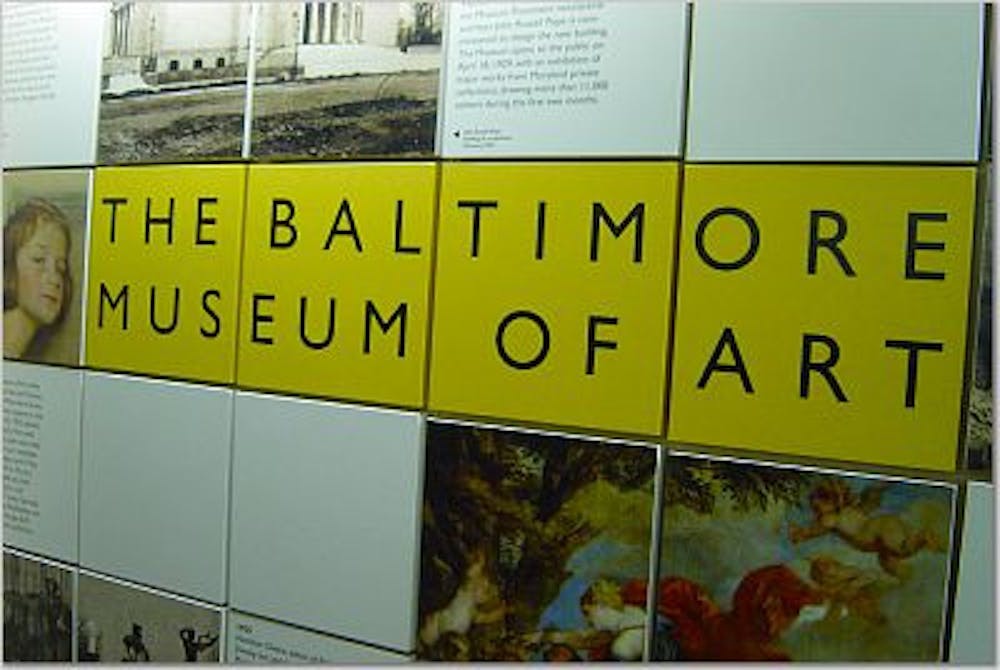With an official hybrid plan for the spring semester released, most of us can’t wait to return to campus. While there are many exciting opportunities to look forward to, why wait? What if you can’t return come spring 2021? There are many opportunities available now for you to enjoy in Baltimore, both in person and remotely.
Art has always been relegated to the sidelines. For many of us at Hopkins with an engineering degree, art seems like an unnecessary distraction more than anything else. However, learning to appreciate art during college is an important skill.
First, now is the best time to establish these foundations. Second, when I speak to adults, many of them have confessed to me how profound the appreciation of art has been in their lives. And third, Baltimore specifically is rich in art, with three art museums like the Baltimore Museum of Art (BMA), the Walters Art Museum and the American Visionary Art Museum. We ought to capitalize on these amazing opportunities while we are at Hopkins!
Recently I explored the BMA and the Reginald F. Lewis Museum of African American History & Culture online, inspired by an article in The News-Letter. To me, art is an important indicator of a location because it reflects the local society, communal emotions and values and sheds light onto social dynamics that no piece of written news can.
My favorite BMA collection is called Necessity of Tomorrow(s), which supports local artists by offering them visibility and exposure. Providing digital access to local artwork for community members, the bright, bold yellow design pops up before your very eyes. Among the various pieces, my favorite was a piece called Shipped by Jalynn Harris, in which the artist tackles multiple issues at once, including the role of gender and race today. My interpretation is that the artist seeks to reflect the perpetual cycle of injustice toward Black girls.
In contrast, the Lewis Museum aims to memorialize the lives of Black Marylanders, with a large online collection of exhibits that allows visitors to explore Black heritage through themes of family, community and history. The online experience is designed to reflect more of a traditional, typical museum experience.
The main difference between the two experiences is that the Lewis Museum is designed to capture and preserve the past by drawing on a large database, whereas the Necessity of Tomorrow(s) aims to capture the present and the future, thus offering a more limited collection. Both offer their own value to the community, making it difficult to distinguish which is “better.”
Both sites encourage the user to explore and discover new and interesting exhibits. While the Necessity of Tomorrow(s) galleries are modern, new and fresh, the Lewis Museum allows users to discover new art by generating a random art experience, where they can get a quick glimpse into a unique subset of the collection.
This brings us to the following question: What role should cultural institutions play in cities?
Traditionally, institutions like the Lewis Museum have been created to preserve and share the heritage and traditions of the location. This is what my impression of cultural institutions was beforehand as well; many of them in Hong Kong, which is where I grew up, aim to preserve the local historical significance of pieces and artwork more than anything else. However, as I got the chance to explore the Necessity of Tomorrow(s) galleries, I have come to appreciate the power that cultural institutions can have in spreading people’s voices and reflecting contemporary values as well.
This insight allowed me to have a meaningful and interesting conversation about what role art should play in a society with my family at the dinner table. On one hand, my parents advocated for cultural institutions to preserve the past, while on the other hand, my siblings and I thought that it was more important that museums stay fresh and capture current times of change. In the end we overcame our generational differences, deciding that both are necessary; it was a really rewarding experience overall.
For many of us currently reaching the crux of an overwhelming semester, a break from work may seem impossible. Many of my friends have told me that they just can’t wait until Thanksgiving so that they can finally take a break. So I don’t blame you if you pass on this opportunity or postpone it to next week, but it is important to visit, observe and learn from these cultural institutions that are right at our fingertips.
If you ever don’t feel like working or want to procrastinate for an hour or two, I would highly recommend checking out the online Baltimore art galleries. Perhaps you will find yourself a gem!





